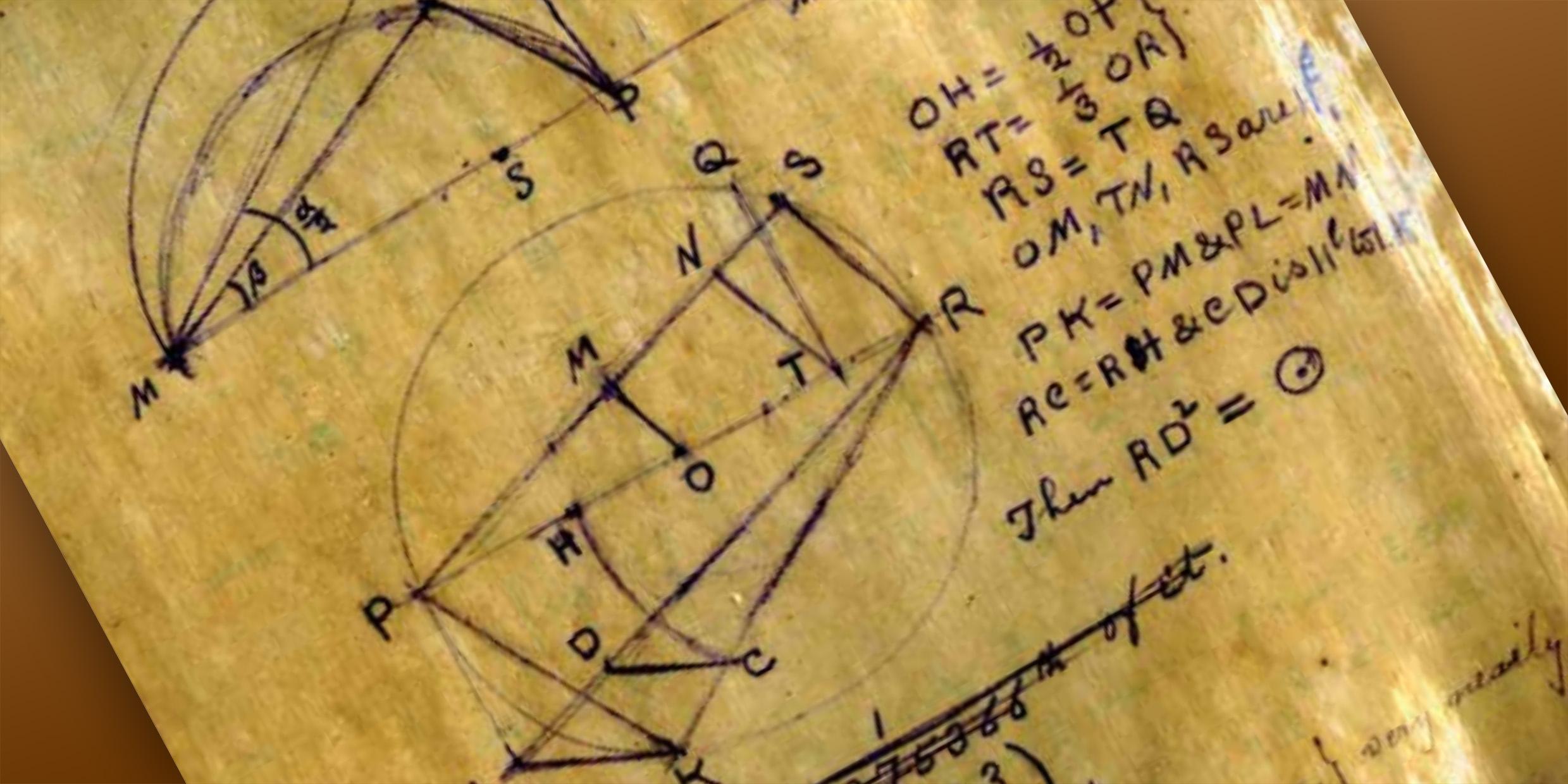Originally published 9 March 1987
In 1913, the famous English mathematician G. H. Hardy received a letter from an unknown Hindu clerk in Madras, India, named Srinivasa Ramanujan. Attached to the letter were more than a hundred mathematical theorems, stated without any indication of how they they were derived.
A few of the theorems Hardy recognized as well-known in certain branches of mathematics (although Ramanujan had come up with them independently). Others of the theorems Hardy was able to prove himself, although with difficulty. Of still others, Hardy wrote that he “…had never seen anything in the least like them before.”
“A single look at them is enough to show that they could only be written down by a mathematician of the highest class. They must be true because, if they were not true, no one would have had the imagination to invent them,” Hardy wrote.
An unknown genius
Who was this mathematician “of the highest class” who appeared from nowhere? Srinivasa Ramanujan was born in 1887 into a poor Brahmin family. His father was a bookkeeper in the firm of a cloth merchant. In school, Ramanujan showed an early aptitude for mathematics. His real enthusiasm for the subject was ignited at age 15 when he managed to borrow an English mathematics text. From that moment on, he thought of little else but theorems and proofs. He jotted his results in notebooks that he carried everywhere with him. He won a fellowship to a government college, but failed to be promoted because of his neglect of all subjects except mathematics.
He was pitifully poor, and could find only minor clerical jobs. Luckily, Ramanujan also found influential friends who recognized the value of his talent. They encouraged him to correspond with Hardy. Hardy, in turn, arranged to bring Ramanujan to Trinity College, Cambridge, where the self-taught Indian mathematician had a brief but brilliant career. He died in 1920 at the age of 33, probably of tuberculosis. Several of Ramanujan’s notebooks were published not long after his death; for 60 years they have provided the basis for important mathematical discoveries.
In this centenary year of Ramanujan’s birth there is new interest in his life and work. One scholar who has been studying Ramanujan’s contributions to mathematics is George Andrews of Penn State University. In 1976, Andrews discovered in Trinity College Library 130 sheets of “scrap” paper covered with unlabeled, almost illegible mathematical notes made by Ramanujan in his last years. For the past decade, Andrews has been examining the more than 600 equations in this new collection of notes, now called the “Lost Notebook of Ramanujan.” He reported on his findings at the recent meeting of the American Association for the Advancement of Science.
Like the previously published notebooks, the Lost Notebook will inspire mathematicians to follow Ramanujan down mysterious pathways of discovery. The insights in the notebook are fresh and original. As of 1976, more than 40 years after Ramanujan’s death, no more than 20 percent of what he worked out on these scraps of paper had been re-derived by others. There are no proofs in the notebook, yet Andrews is confident that Ramanujan’s results are true. It is not known if Ramanujan had worked out proofs for his conjectures, or whether they are simply the result of a brilliant mathematical intuition.
It is widely held belief that mathematics is an orderly, ultra-logical way of deriving theorems from postulates. According to this view, you push postulates and theorems into the machine of mathematics, turn the crank of logic and out pop new theorems. If you are lucky, the theorems will have a practical application to the real world.
This mechanical view of mathematics, however, has no relevance to Ramanujan (or to any of the great mathematicians).
A continuous flow of ideas
Brilliant theorems seemed to bubble up from his mind like water from a dark spring. The sources of his creativity were subterranean, flowing in hidden channels of the human imagination. For Ramanujan, logical deduction was not a way of finding truth, but of confirming what had been found. And he did not care about practical applications; the best mathematics, like the best music, justifies itself.
In his essay “Great Men and Their Environment,” psychologist and philosopher William James wrote: “The community stagnates without the impulse of the individual; the impulse dies away without the sympathy of the community.” It is not hard to imagine that Ramanujan’s impulse to mathematics might have been lost, crushed by poverty and prejudice. In a dark time, he found sympathy and support. The community was made richer by his work.
During the last years of his life, Ramanujan was gravely ill. Of this time his widow said: “He was only skin and bones. He often complained of severe pain. In spite of it he was always busy doing his mathematics. That, evidently, helped him forget the pain. I used to gather the sheets of paper which he filled up.” Those gathered scraps of paper are the legacy of a great mind.



